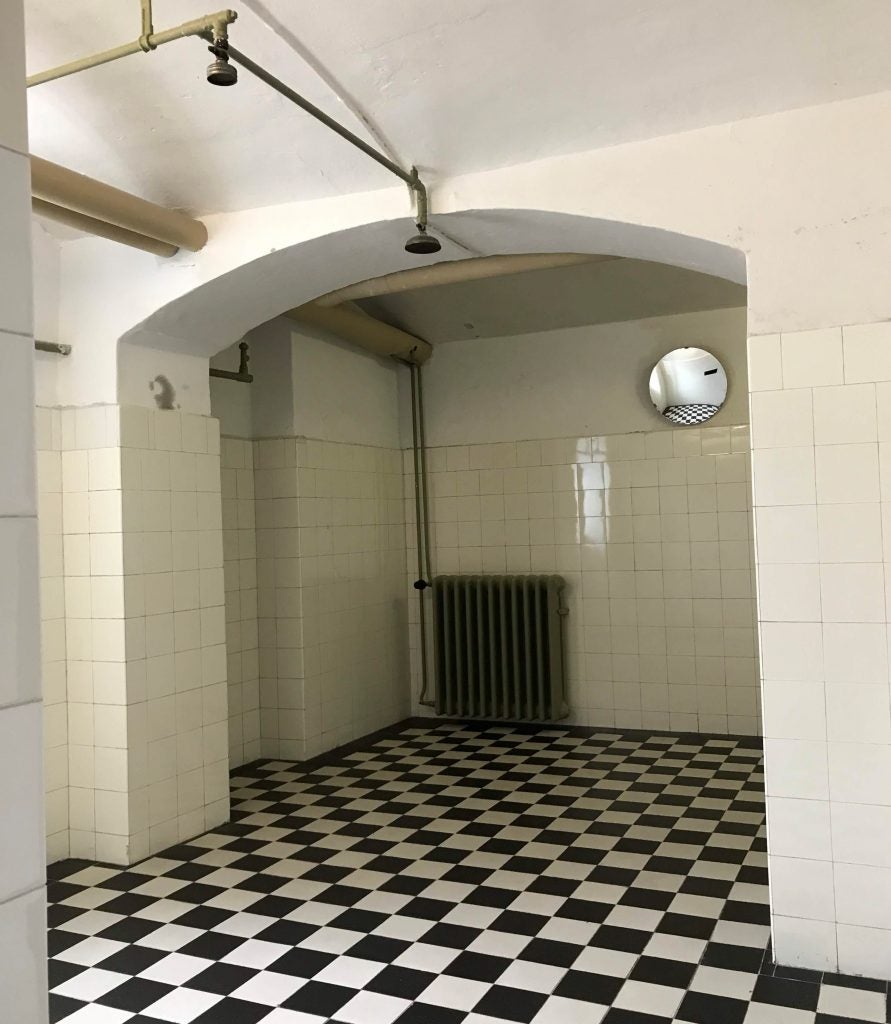KIE Acting Director Publishes New Book On Physician-Assisted Suicide, Euthanasia, and the Holocaust

Gas chamber in the basement of the psychiatric hospital in Bernberg, Germany, where thousands of neuropsychiatrically ill patients were “granted deliverance” from their conditions between 1939 and 1941. Patients are still being treated by medical professionals upstairs at this hospital today, as if oblivious to the history that lies below. Photograph courtesy of Dr. Sulmasy.
KIE André Hellegers Professor of Biomedical Ethics and Acting Director Dr. Daniel Sulmasy has published a new book, Physician-Assisted Suicide and Euthanasia Before, During, and After the Holocaust, co-edited with Dr. Sheldon Rubenfeld, Clinical Professor of Medicine at Baylor College of Medicine and Executive Director of the Center for Medicine after the Holocaust (CMATH).
“This book was four years in the making and I hope it will stimulate debate about physician-assisted suicide and euthanasia in many quarters,” Rubenfeld said.
In a statement celebrating the book’s release, CMATH lists four objectives of the volume:
- To bring the history of medicine and the Holocaust to a new audience
- To explore this history from the perspective of biomedical ethics
- To delve into the pre-Nazi arguments for euthanasia
- To explore possible continuities between the justifications that undergirded the Nazi euthanasia programs and contemporary calls for PAS and euthanasia
Euthanasia during the Third Reich is understudied and undertaught. Physician-Assisted Suicide and Euthanasia: Before, During, and After the Holocaust uncovers that euthanasia was not a practice imposed on physicians but accepted by Western medicine before the Third Reich. The contributors of the volume urge caution in light of the current trends to legalize euthanasia and physician-assisted suicide given the historical parallels in Nazi ideology used to justify euthanasia during the Holocaust.
“The book is the culmination of an international, multi-year project that involved visits by scholars to historical sites in Germany as well as scholarly research and presentations. What one learns by studying history is that the gas chambers of Nazi Germany were invented by German physicians to eliminate the disabled,” Sulmasy said. “At a later stage during World War II, concentration camps turned to these same physicians to use their gas chambers to more efficiently realize the “Final Solution.” Physician-Assisted Suicide and Euthanasia Before, During, and After the Holocaust provides reflections on what can be learned from that experience that is relevant to considerations regarding physician-assisted suicide today.”
For Book Purchases: Publisher Rowman and Littlefield. It is also available through Amazon, Barnes and Noble, and other online booksellers.
If ordering through Rowman and Littlefield, use code LEX30AUTH21 for a special 30% discount when ordering.
*May not be combined with other offers and discounts, valid until 12/31/2021.